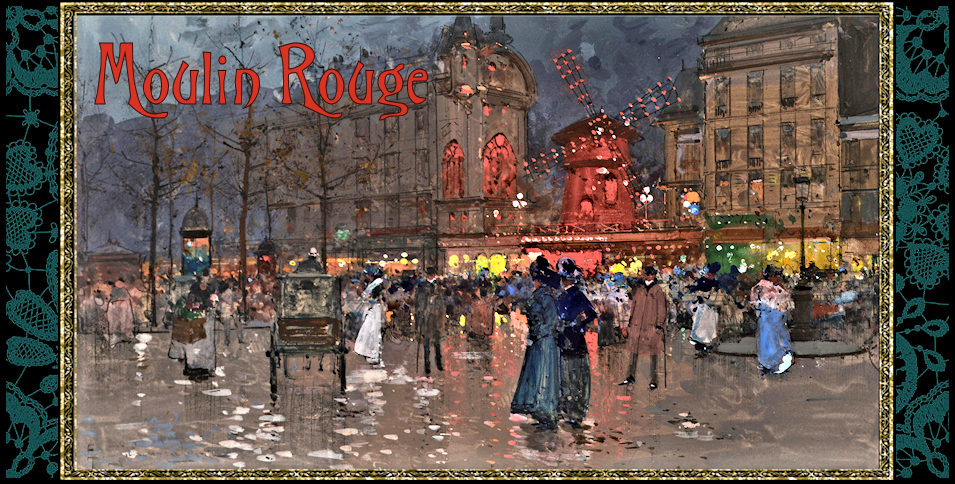The Red Windmill cabaret was first known as the Jardin de Paris. From the famous images of the exterior with its electrified red windmill, few known that there was an elaborate garden within. It’s founders, Charles Zidler and Joseph Oller wanted a site where social barriers were broken down, where the rich could sample a wilder world. It quickly became the place to go for daring delights. In its earliest days, members of the audience might become part of the show.
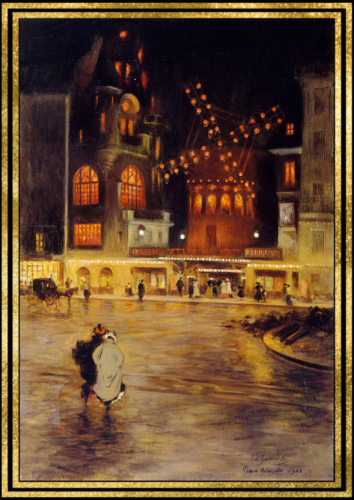
It was here that the flamboyant dance, the can-can, was born. Many dancers, singers, and comedians made their careers by performing at The Moulin Rouge. La Goule, Jane Avril, la Môme Fromage, Grille d’Egout, Nini Pattes en l’Air, Yvette Guilbert, Valentin le Désossé—Valentine the Boneless, Le Pétomane (whose name meant the Farting Maniac, Footit and Chocolat, and the clown Cha-U-Kao.
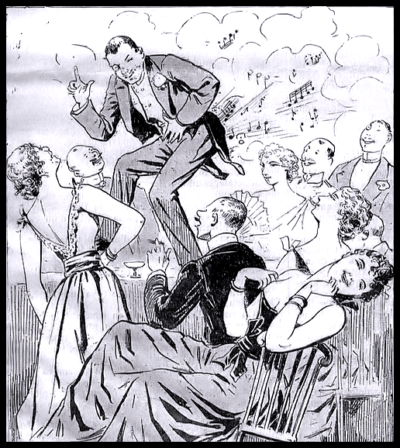
Many were celebrated by the artists who were drawn to the vivid setting. Charming posters by Jules Cheret were already popular throughout Paris.
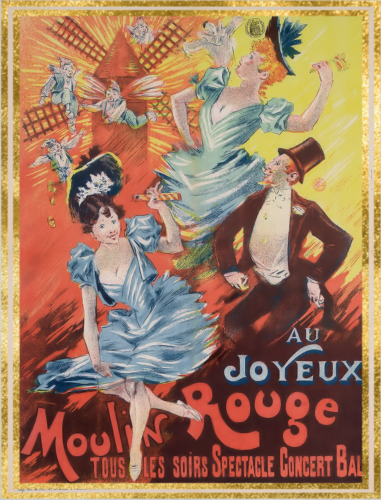
But Henri de Toulouse-Lautrec immortalized the cabaret and the artists by creating dynamic new images. Both posters…
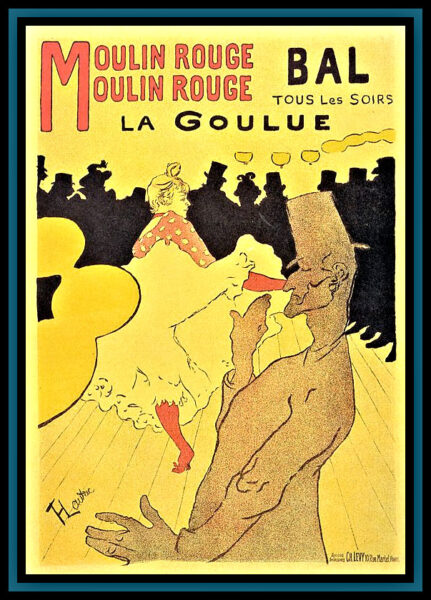
And paintings….
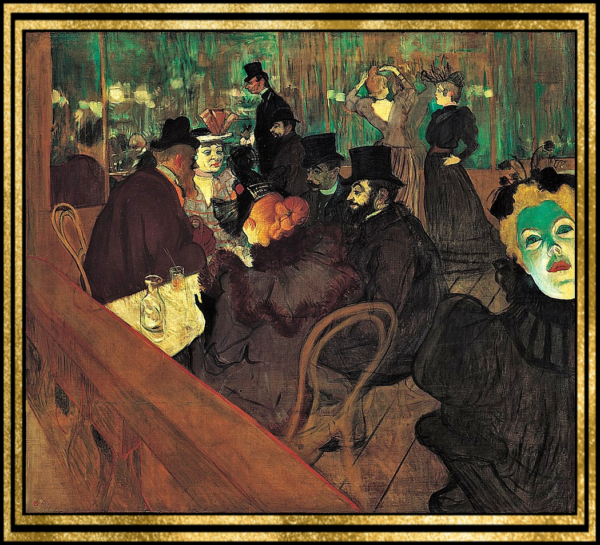
The Moulin Rouge reveled in its notoriety. It connected itself with the “Bal des Quat’z’Arts,” a yearly parade and party of the art students. It once caused a scandal with a procession of a nude Cleopatra surrounded by young naked women. Posters for the event became more and more risqué.
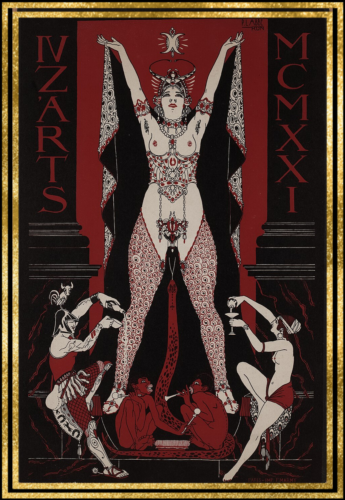
Ind November of 1897, Charles Zidler died and The Moulin Rouge closed its doors for the first time. In my novel, A Harmony of Hells, Blaise Dancier wants to become a new partner. He visits the cabaret with Averill Charron and they spend an hour or two wheeling and dealing inside the famous elephant, where exotic opium parties were once offered.
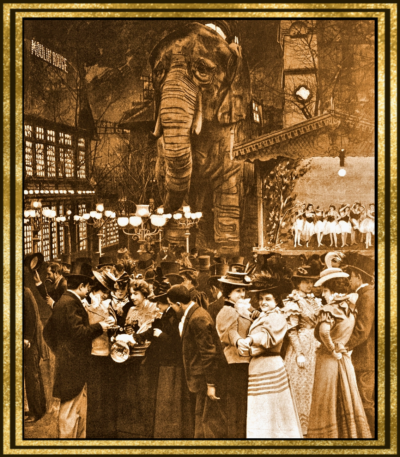 They discuss plans for how the cabaret might celebrate the upcoming Universal Exhibition in 1900. One of the things planned was a roller coaster that would run around the garden.
They discuss plans for how the cabaret might celebrate the upcoming Universal Exhibition in 1900. One of the things planned was a roller coaster that would run around the garden.
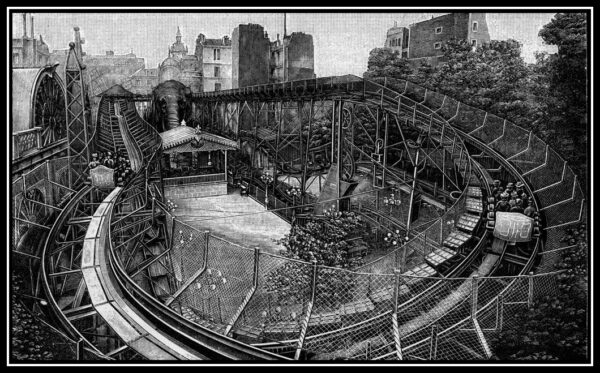
There was even a poster for this phenomenon, though it probably never existed since The Moulin Rouge did not reopen until January of1903.
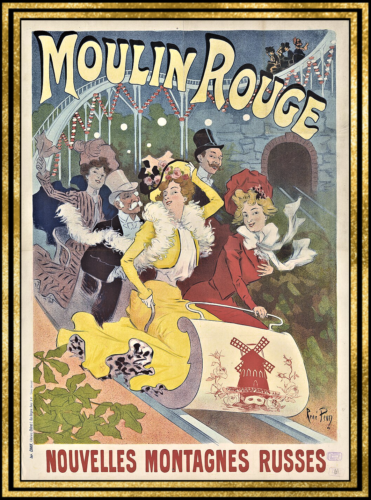
It enjoyed a glorious decade of fortune and acclaim. Imitations of the cabaret sprang up around the world, but none equaled its glamour.

Then came the fire. The cabaret was destroyed in 1915 and wasn’t rebuilt until ten years later. The following decades were a decline, though the famous actress Mistinguett took control and made several songs synonymous with the cabaret, like Ça c’est Paris! and Il m’a vue nue (He Saw Me Naked).
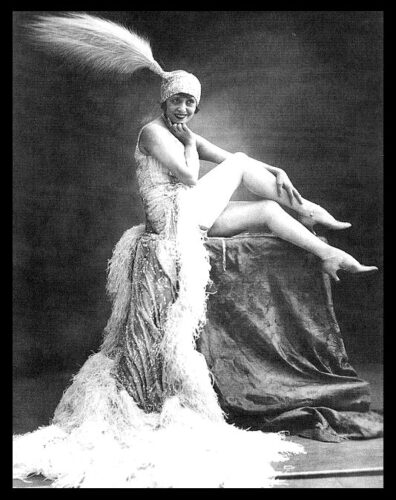
Other famous performers appeared there after WWII, Edith Piaf and Yves Montand among them, but The Moulin Rouge didn’t regain its popularity until it was renovated as a national treasure in 1951. And the show goes on….
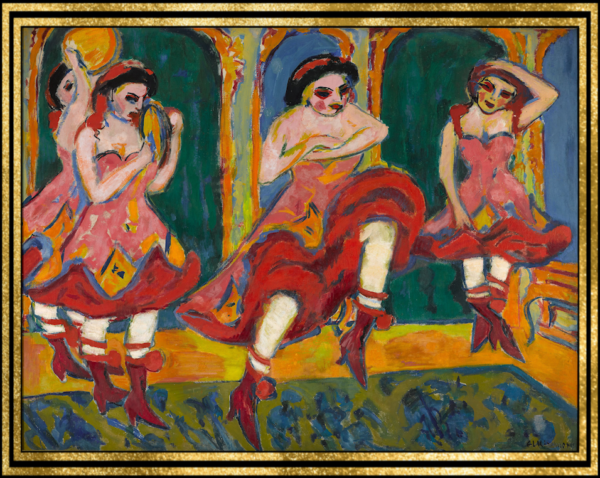
Banner image is Eugène Galien-Laloue’s Evening at the Moulin Rouge
